You know what some people say how drug use can escalate out of control and into addiction? Well I don’t know about that, but I do know that knitting and crochet most definitely work that way. It begins with ‘Ooh, I’ll just learn to knit so that I can make this cute hat,’ and then before you know it, you’ve forgotten the names of a couple of your children and there is actual vegetation growing in your kitchen sink, because you’ve become A TINY BIT OBSESSED with knitting a perfect replica of the Mona Lisa in intarsia? (No? Just me, then?)
But even that isn’t enough, oh no. Because once you can knit/crochet, then it’s only natural to become interested in yarn, and from there it’s but a small step towards trying spinning… and dyeing… and before you know it, you’re casually dropping into supper-table conversation that darling, wouldn’t it be a lovely idea to get some sheep to keep in the back garden, just in case the local yarn shop ever runs out of wool… At this point your dearly beloved raises an eyebrow, and moves your drop spindle out of the way in order to reach the salad, and one of your children (it might be Hieronymus, or is his name Wilberforce – if only you could remember!) mutters something about how Mummy has lost the plot… and your dear spouse doesn’t even tell him off for being rude because he was only saying what everyone around the table (apart from you) was thinking.
Gosh, that got a bit dark for a Friday afternoon blog post, didn’t it? Anyway, the point is that with this yarn malarkey, one thing can most definitely lead to another, and there’s a fair-to-middling chance that sooner or later, you’ll wonder what it’d be like to try dyeing your own yarn. At which point, you might like to consider buying this very small, very helpful, and very affordable, book:-
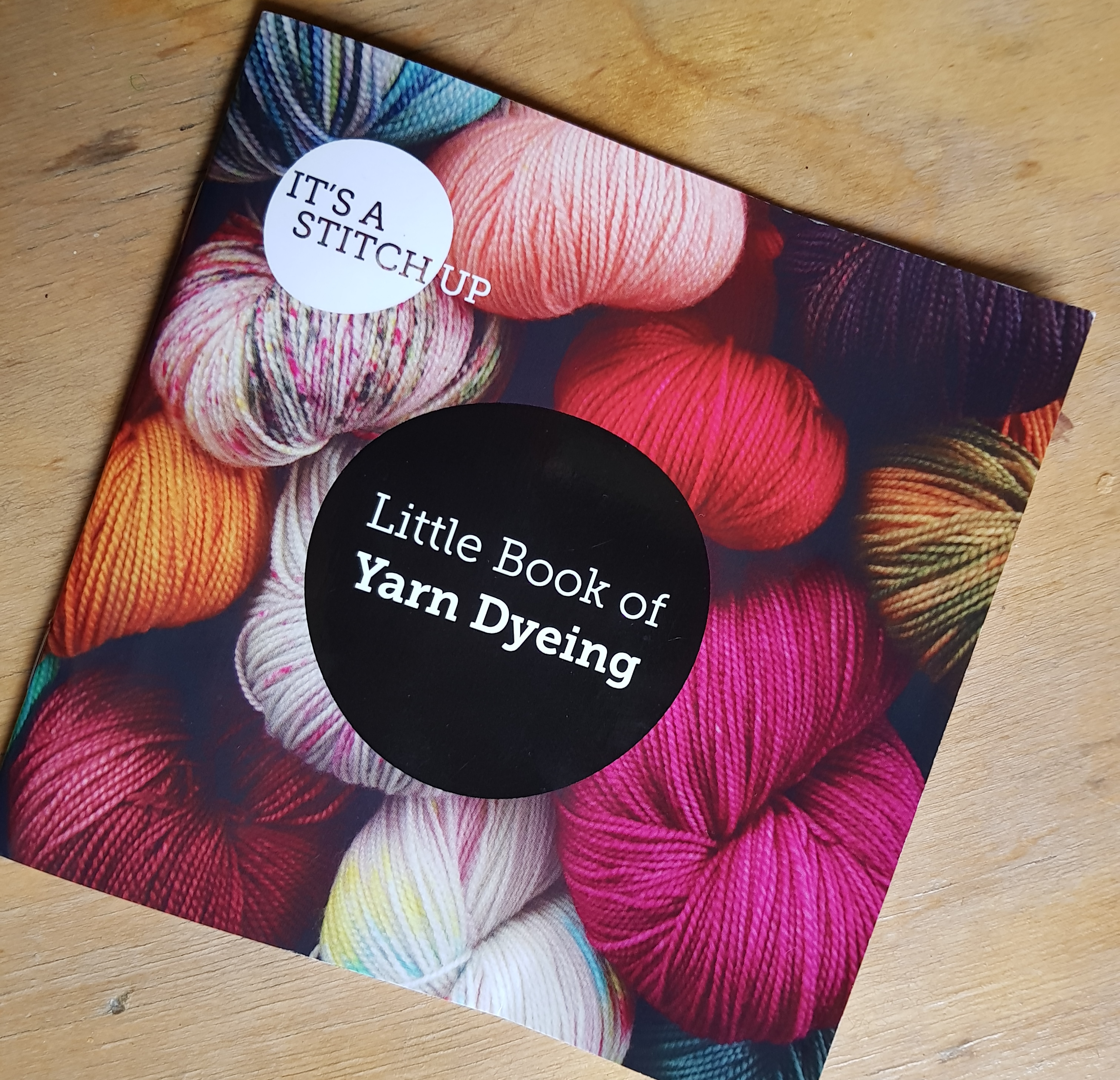
The Little Book Of Yarn Dyeing has just been published. It’s written by Suzie Blackman, dyer at It’s A Stitch Up. (I’ve mentioned her before.) And it is, indeed, little. That’s OK, though, because inside, it gets straight down to the nuts and bolts of exactly what you need to do if you want to dye yarn at home in your kitchen using commercially-produced pigments. (If you need a thesis-level treatise on silk-dyeing in 14th century France, you’re going to have to be prepared to look elsewhere for a considerably larger book. Same if you need advice on dyeing at high altitude. ←Example chosen because the Stoic Spouse and I own The Bread Bible, a book so comprehensively detailed on the subject of making bread that it does indeed include a chapter on how to bake at high altitude.)
This little beauty, meanwhile, is a highly practical book(let) for folk who know a bit about yarn and want to take the next step. Blackman walks us through the principles of dyeing, so that you’ll understand the reasons for each stage of the process. She explains the different approaches (speckling, painting, and so on) that you can use to achieve very different decorative effects.
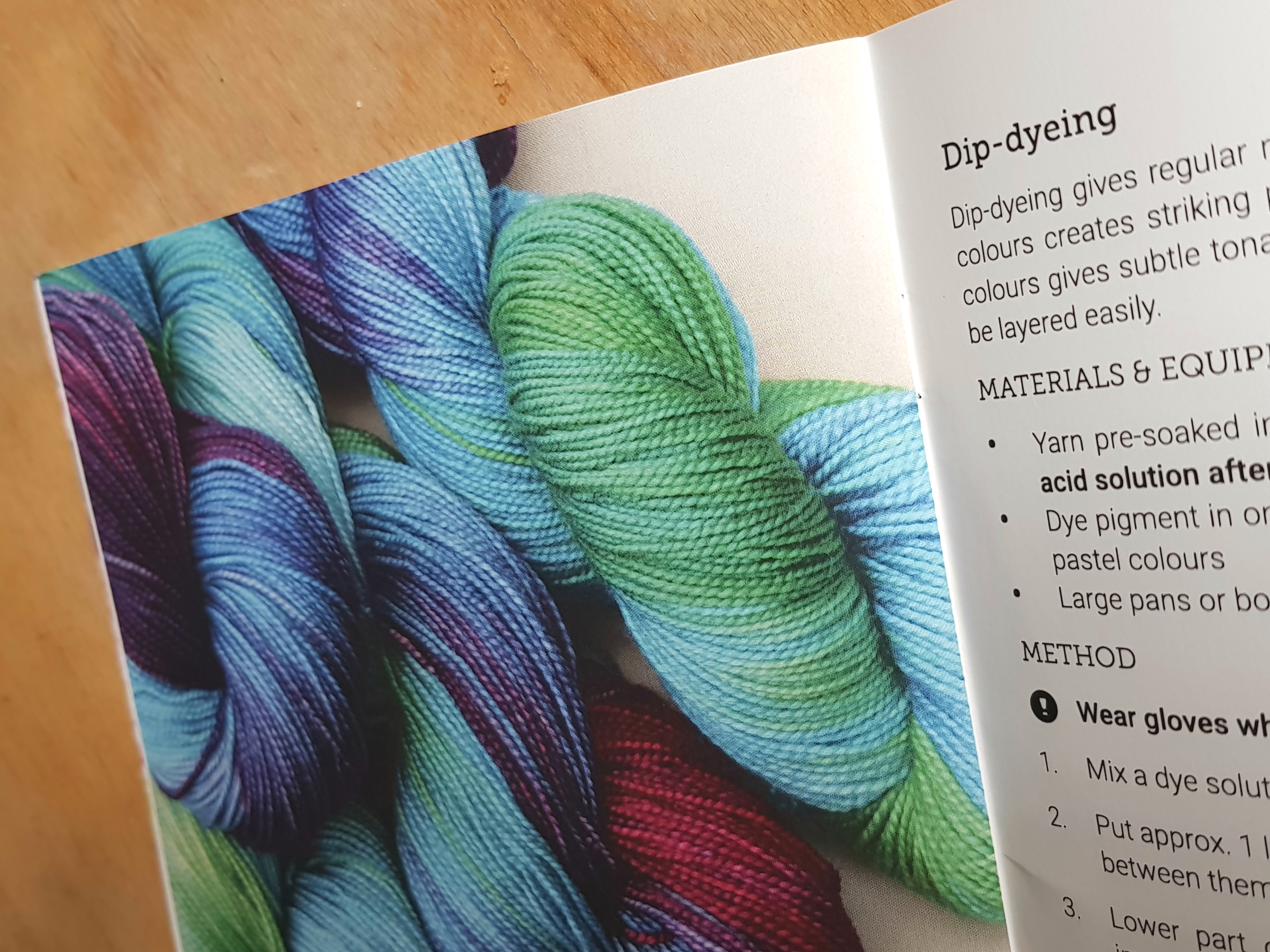
She’s hot on safety, because some of these chemicals aren’t substances that you’d want to accidentally dribble into your coffee.
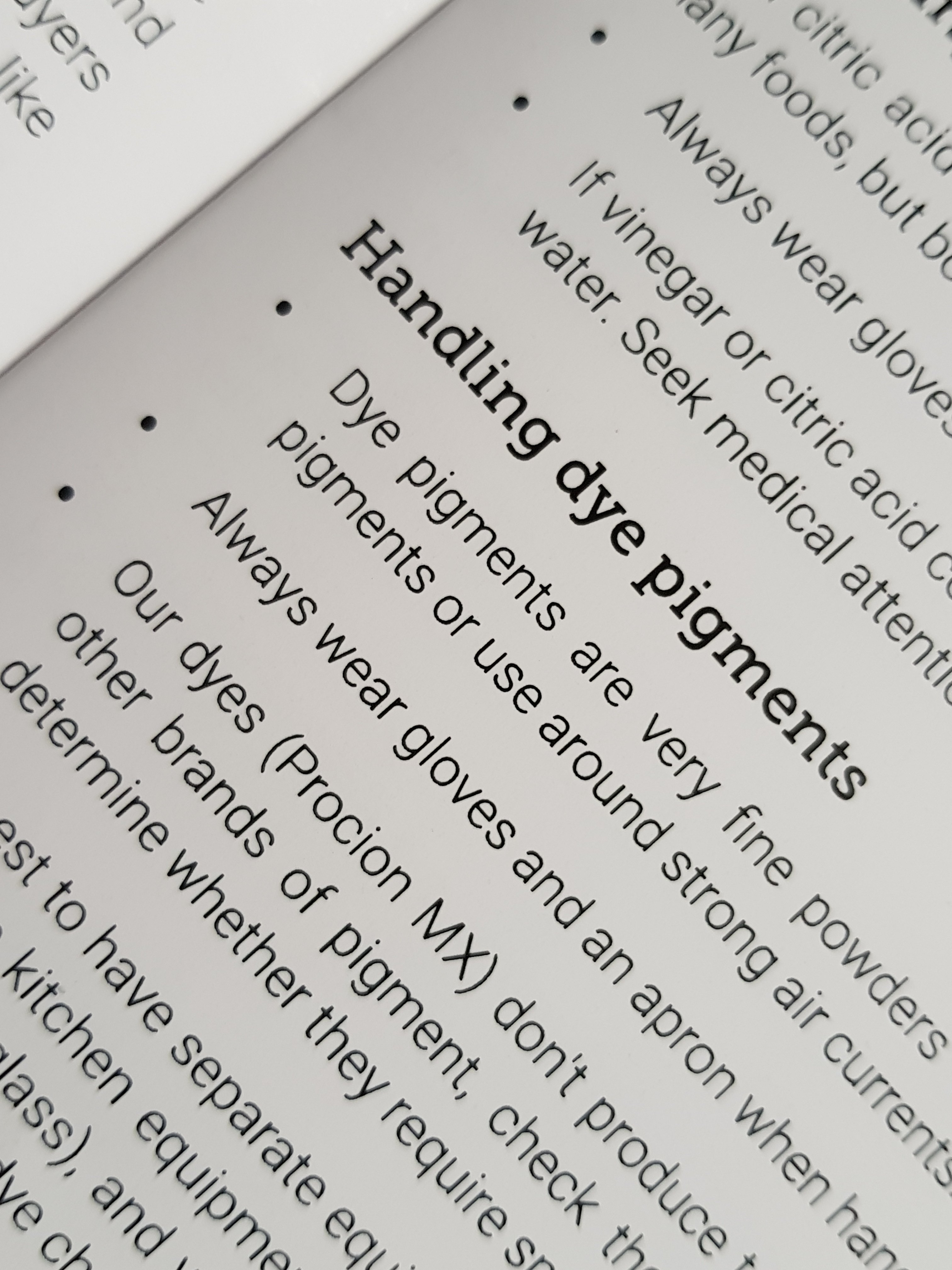 But most of all, she provides incredibly clear and helpful instructions for anyone who wants to learn the whole process of dyeing at home in their own kitchen, using readily available equipment. And given that this is a scaled-down version of what she does for a living, it’s fair to say that she knows her stuff. Here’s some of Suzie’s lovely hand-dyed yarn:-
But most of all, she provides incredibly clear and helpful instructions for anyone who wants to learn the whole process of dyeing at home in their own kitchen, using readily available equipment. And given that this is a scaled-down version of what she does for a living, it’s fair to say that she knows her stuff. Here’s some of Suzie’s lovely hand-dyed yarn:-
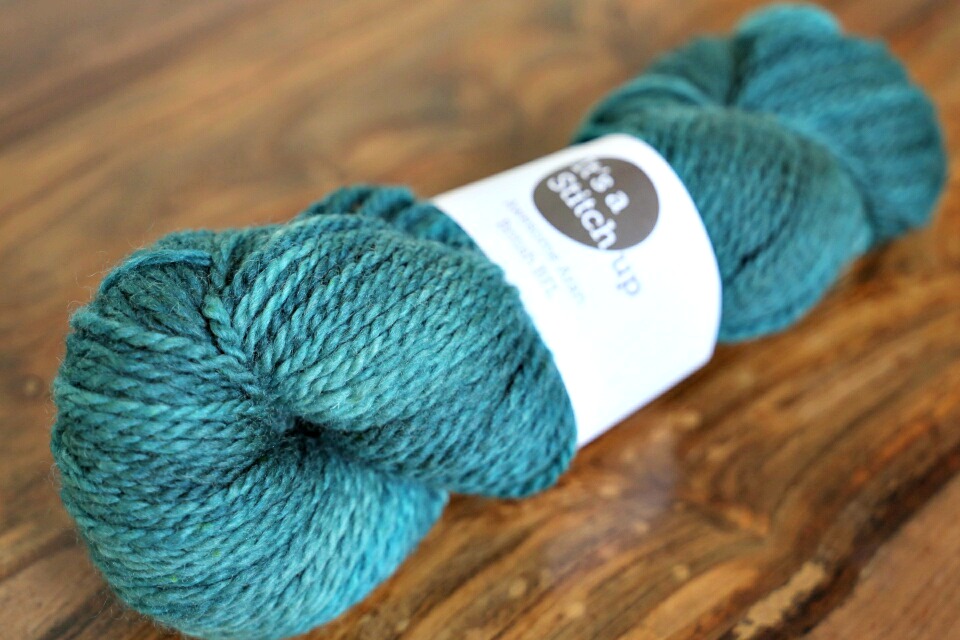
The Little Book Of Yarn Dyeing is available right now, here on It’s A Stitch Up website. It’s priced at £4.50 and she ships worldwide.
Suzie very kindly sent me the free copy that I’m reviewing here, and now I’m eyeing up kitchen equipment that could be pressed into service for dyeing…
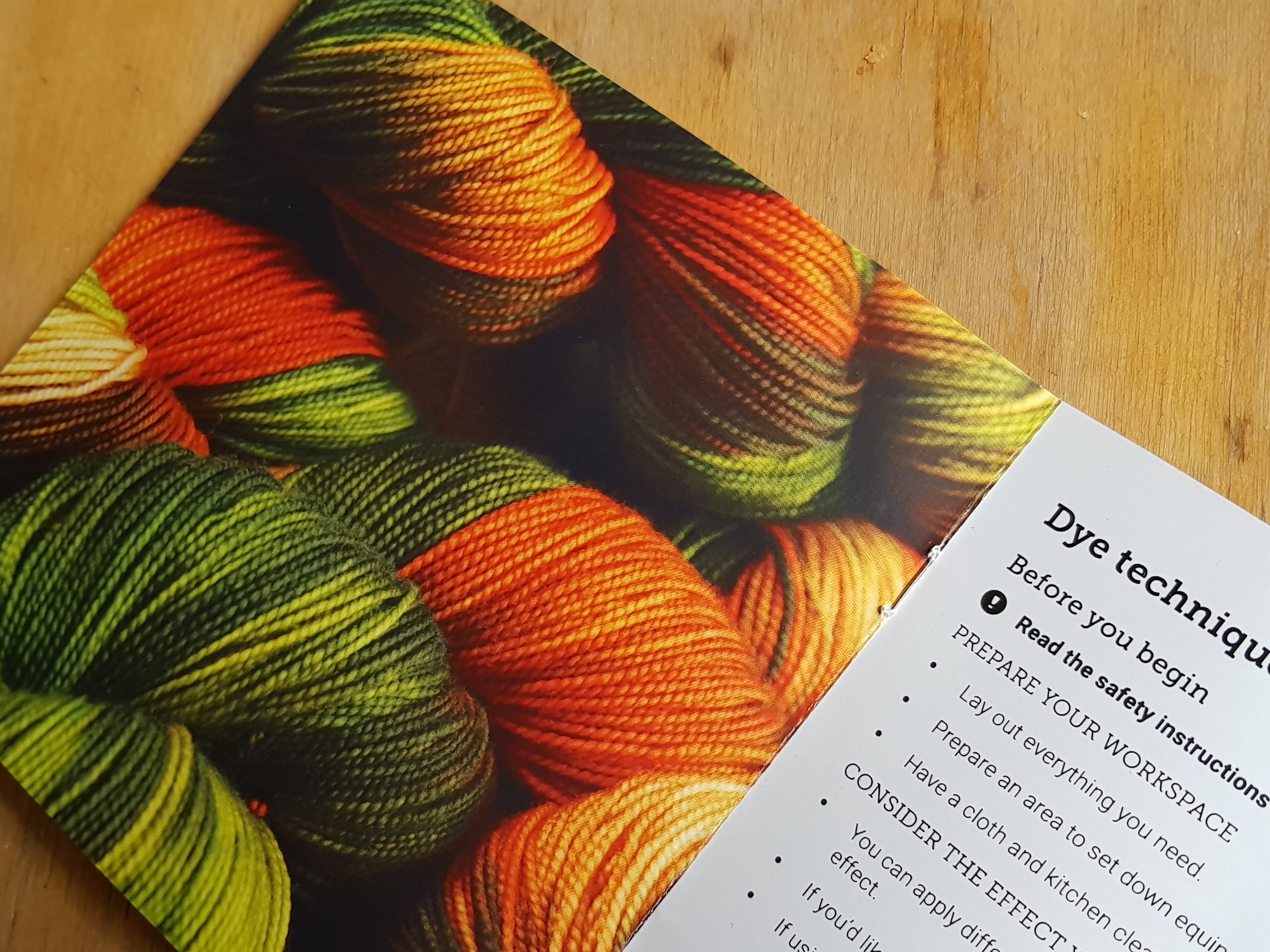
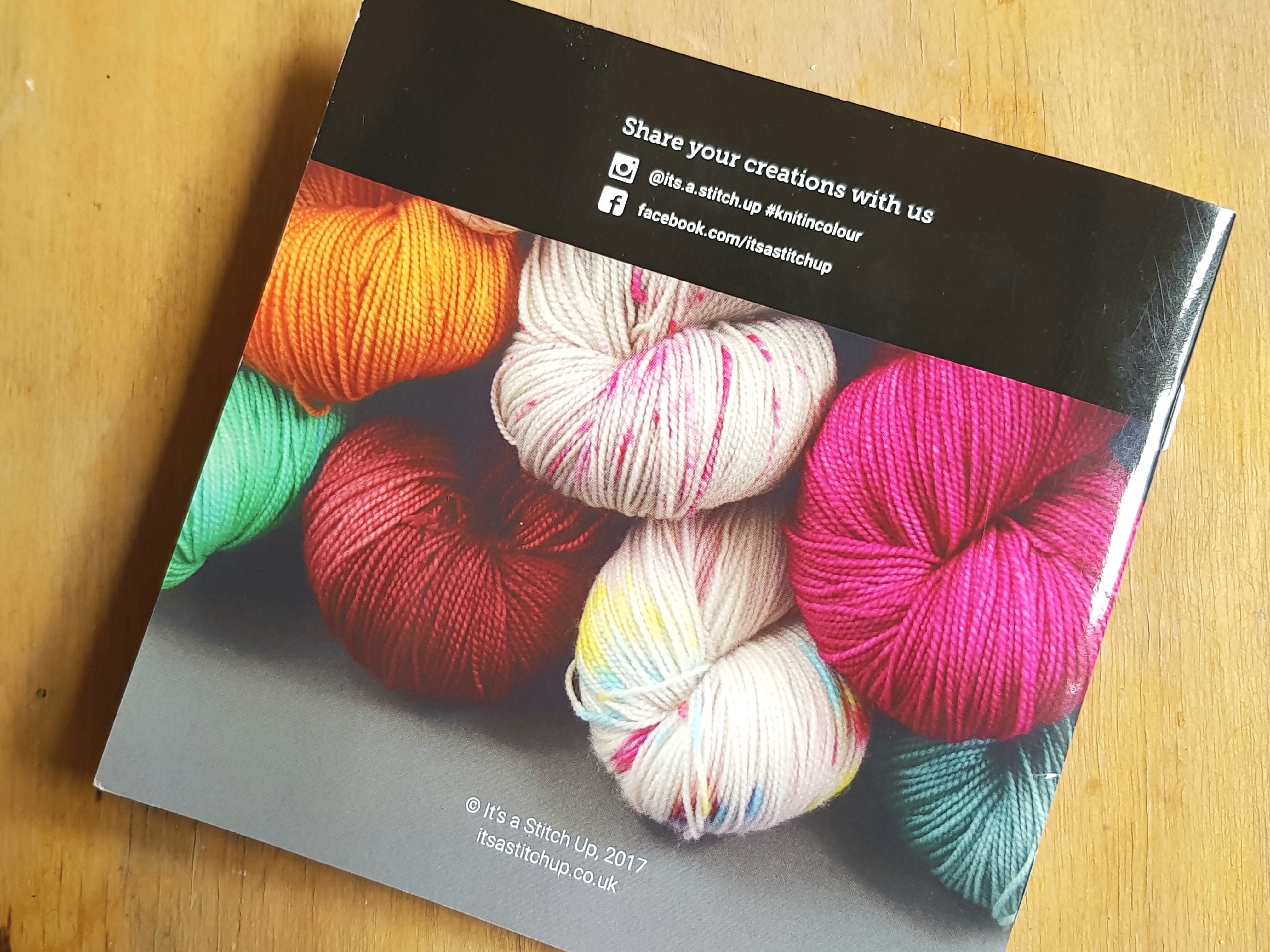
Oh god. I have just purchased yarn and some dye for dyeing. Is it the beginning of the end?
Yup. Sorry.
Oh, what have you done?! I now have to buy this book and Lord only knows what else and I just bought a loom off eBay and we won’t mention the umpteen webpages on macrame I have saved.
Yarn addiction? Yeah, I think so!
So I often think of knitting as the gateway drug to all things fiber related. I have been knitting and crocheting for about 40 years, dying for maybe 4 or 5, and spinning for just over 1. Weaving is calling my name, but I am resisting.
I look at dying and spinning as ways to get the absolute MOST out of my knitting money. I mean really, you can buy plain fiber relatively cheaply, spend some time dying it before spinning, then spend oodles of time spinning (and thus not knitting and flying through more expensive yarns) before you get to knit with some amazing yarn you completely made yourself! That same cash can keep me busy for several weeks, or one weekend. Clearly, it is more cost effective to do it all. 🙂
this book sounds great, and I love her yarn, so I am sure the book will be perfect. Can’t wait to see what you cook up!
Already have the spinning wheel and the weaving loom but hadn’t considered dyeing yet – until now that is! Have always wished for space to keep alpacas though.
Deep breath, browse yarns online… repeat to myself… I’m TOO LAZY to go to the trouble of dying yarn, I’m TOO CLUMSY to have chemicals in the kitchen, because the dogs, cats or birds might eat them. I will NOT buy this book, I will go back to my knitting now.
It starts with granny squares for crocheters .
You know you are falling down the rabbit hole when you start thinking of buying mainly white yarn and wondering which kitchen items can be re-purposed for dyeing and which pots for dyeing will go on your wish lists along with some vinyl table cloths so you can dye some fabric and yarn.
Maybe I am in the wrong place. Think I’ll stick to shop yarn. More time for knitting and crochet and all those other things!!
“Yes!”
…and that’s before you even start on all those wonderful plants in your garden that will turn your yarn amazing colours!
I knew I was coming unhinged when I bought 2 not 1 kits for fair isle sweaters,they are sitting in my maybe one day I’ll get round to them pile. Now we already have a border collie dog, so sheep could be the next step!!!
Border Collies need a job, otherwise they make up their own, and you probably won’t like it…. now if you got your Border Collie a sheep I think that would be one happy content Border Collie. 🙂
I have just this week reached the stage of wondering whether I could dye my own yarn. I am already well on my way down the slippery slope…
I know that rabbit hole well; I fell in at age 4 or 5 when Mum started me on hand-stitching. At 10 I progressed to knitting, crochet and embroidery. Not much happened in my teen years, but once my first son was on the way, knitting returned to my life, settled by the fire and never left again. Along with her came her various fibre siblings. Somewhere in the storage I have several pages listing natural plants for dyeing and the mordants needed, if any. One day that will surface. I’ve done some silk dyeing and still have supplies (guess where?). I used to dream of sheep myself and a collie and/or a border collie to help with caring for them. For now, I have a box of unspun, but washed, fleece waiting for me to settle down a bit more. I took spinning lessons quite some time ago and I know how to use a drop spindle and even how to make one from a large knitting needle and a potato! Lots of fun. Not that long ago women would go to fetch the cows for milking and use their spindle (or knit) along the way, making use of every possible bit of time. I’m a bit that way myself; I always have my workbasket with me in the car and it’s amazing what can be done in even the shorter trips to run errands (I’m not driving, of course!). Once I would carry knitting or crochet with me and if I were caught up waiting at the bank or a checkout, I always got a wee bit done. Fibre of any sort is a gateway drug and I’m glad it’s still legal!!
Thanks for a fun post, Phil. You brought a smile to my face. ~ Linne